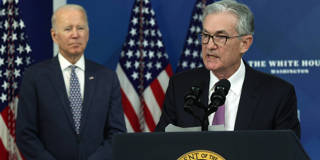While rules-based monetary policy thrived when globalization put downward pressure on inflation, the COVID-19 pandemic has revived central bankers’ long-dormant preference for inflationary policies. This shift may help central banks maintain their independence, but it also increases the likelihood of another surge of price growth.
CAMBRIDGE – Listening to central bankers, one would think that the recent bout of high inflation was merely an excusable post-pandemic forecasting error made under extreme uncertainty. But while this narrative now prevails in markets and the financial press, it presumes a level of central-bank independence that is simply unrealistic in today’s volatile economic and political environment. And even if central banks manage to get inflation back down to 2% in the foreseeable future, the likelihood of another inflationary surge within the next 5-7 years has significantly increased.

CAMBRIDGE – Listening to central bankers, one would think that the recent bout of high inflation was merely an excusable post-pandemic forecasting error made under extreme uncertainty. But while this narrative now prevails in markets and the financial press, it presumes a level of central-bank independence that is simply unrealistic in today’s volatile economic and political environment. And even if central banks manage to get inflation back down to 2% in the foreseeable future, the likelihood of another inflationary surge within the next 5-7 years has significantly increased.